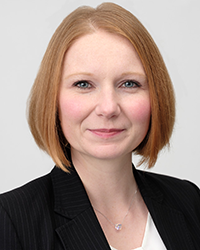

- Anis Rahal
- CEO and Founder, Bottomline

- Eleanor Hill
- Editorial Consultant, Treasury Management International (TMI)
As digitisation accelerates and organisations rethink their technology requirements as a result of Covid-19, treasurers are questioning whether their treasury management systems (TMSs) are still fit for purpose. Anis Rahal, Founder and CEO, TreasuryXpress, explains how fintech-driven TMS solutions can provide the intelligent functionality treasurers need, at a price they can afford, with the added bonus of flexibility in the face of innovation.
Eleanor Hill, Editor, TMI (EH): We’ve been talking about digital transformation for a number of years now, but how has Covid-19 changed the rules of the game? And what does this mean for TMS vendors, such as TreasuryXpress?
Anis Rahal (AR): First, it’s important to recognise the human cost of the pandemic. The scale and impact of Covid-19 on the global population cannot be underestimated. Of course, there has been a negative effect on the global economy too – and many companies will be rebuilding for years to come.
One of the silver linings to emerge from the pandemic, however, is the rapid shift towards digital business models. With global lockdown, organisations have embraced remote-working and e-commerce has taken off. At the same time, the digital agenda has advanced significantly within treasury functions. The pitfalls of Excel-based workflows have become very clear when working from home, as have the limitations of on-premise technology solutions and physical tokens for accessing online banking portals
Now more than ever, treasurers are looking for cloud-based technology that enables them to view a complete picture of their cash and treasury operations in one go – at any time, from anywhere, and on any device. They are also keen to migrate as much of their physical operations as possible across to digital channels, while embracing automation and benefiting from top-grade cybersecurity, cutting-edge functionality, and a rapid implementation time.
It’s not just treasurers who are looking to upgrade their treasury technology, either. Interestingly, increasing numbers of banks have been approaching us throughout the pandemic to see how we can team up with them to provide their corporate clients with agile technology. So that’s an interesting trend to watch.
EH: How prepared was TreasuryXpress for a scenario like Covid-19? And how have you been able to support clients through the crisis?
AR: Honestly, no one was totally prepared for the pandemic in terms of the impacts to society and the global economy. However, from a technology perspective, we were in the fortunate position of being a digitally native fintech organisation and we have always prioritised the agility and strength of our offering. As such, we were able to offer a Treasury Technology Relief Programme, which involved giving away free subscriptions to our self-service treasury management tool, which supports centralised cash and financial instrument visibility, cash forecasting and positioning, as well as bank account reconciliations.
And, critically, we were able to get this up and running for treasurers in a matter of days, not several months. Rapid implementation is increasingly important in the digital age, but even more so during times of crisis. We were able to achieve this quick-start solution because of the nature of our on-demand TMS. Unlike more traditional, resource-intensive TMS models to digital, TreasuryXpress leverages the latest innovations, such as open API-powered bank connectivity, to make its deployment and maintenance as light-touch as possible.
So, the pandemic was really a huge test for our founding vision – to be an open and agile TMS provider. And I’m delighted that we were able to respond to treasurers’ needs during extremely challenging times not only from a solution perspective but from a services perspective as well in terms of implementation.
Pre-Covid, circa 80% of our implementations happened with no physical contact, with many clients preferring virtual project management. The remaining 20% of our clients preferred in-person collaboration and meetings. The physical aspect could involve meetings with multiple stakeholders – ranging from banks to consultants and in-house IT teams. Ideally, we would like to create a 100% virtual implementation model. And, again, the pandemic is helping us to work towards this goal as the counterparties we interact with, such as the banks, are now upgrading their connectivity channels. In turn, this should make it even easier to conduct no-(physical) contact implementations in the future.
EH: One technology trend we’re hearing more about is the shift away from all-in-one systems to a selection of best-of-breed solutions. How might this impact the TMS market?
AR: As a former treasurer, I am of the opinion that no single financial system can do everything. Sometimes you need specialist technologies and capabilities on top of your foundational system in order to achieve the best overall solution. So, this is where the idea of best-of-breed solutions comes in – and this is the founding vision I had for TreasuryXpress.
In fact, we built TreasuryXpress to act as a backbone technology, into which we can connect specialists and niche providers via open API. For example, we offer FX conversion functionality within TreasuryXpress, which is delivered by a third party that concentrates solely on FX, and does it really well. We scour the market to find best-of-breed providers to work with, but we also listen to our clients’ needs – and can quickly adapt the system to connect to third parties that our clients require access to.
EH: What are the downsides of the best-of-breed approach?
AR: If a treasurer were to look to build this kind of set-up themselves, rather than using TreasuryXpress, they would face the challenge of having multiple contracts and contact points. The time spent liaising with these different parties could also start to erode the benefits of working with niche providers.
The beauty of TreasuryXpress’ approach is to remove all friction and extra work for the treasurers. To do this, we take care of all of those contracts and relationships behind the scenes. We do all the due diligence on those third parties too, since they are our business partners. So, through one relationship with TreasuryXpress, the treasurer benefits from the knowledge and functionality of all of the best-of-breed solution providers that make up our ecosystem. Our open structure and flexibility also mean that we can plug in more APIs without compromising the speed, efficiency, or security of the system – so it is built with a future-focus in mind.
As we create this frictionless ecosystem, we like to take in feedback from our clients and potential clients as to which partners are the most relevant to our client community and complementary to our technology. But delivering this experience, we can truly make the TMS an on-demand platform – giving clients the functionality they need without long, complex and costly buying and implementation processes.
EH: On that note, how do you see TreasuryXpress’ offering developing going forward? And how can treasurers prepare for this brave new world?
AR: We are working on publishing APIs for cash flow forecasting and in-house banking. Again, these will be developed with best-of-breed partners and we see this approach delivering great value benefits for treasurers. We will also continue to work on the 100% virtual implementations that I mentioned earlier.
To this end, my advice for treasurers would be to forget the days of legacy TMS, both on-premise solutions and older, inflexible Cloud solutions., embrace the accelerated move towards digitisation, and – above all – to encourage their banks to upgrade their connectivity options. Only with a fit-for-purpose digital ecosystem in place will treasurers be able to reap the full rewards that best-of-breed providers can offer, within the safety of a tried-and-tested on-demand TMS solution.



